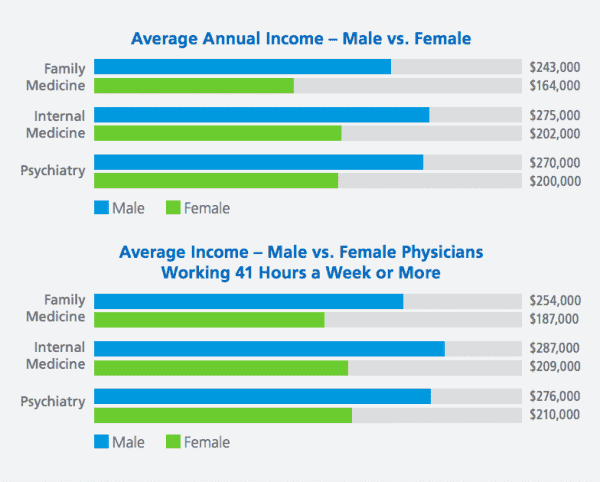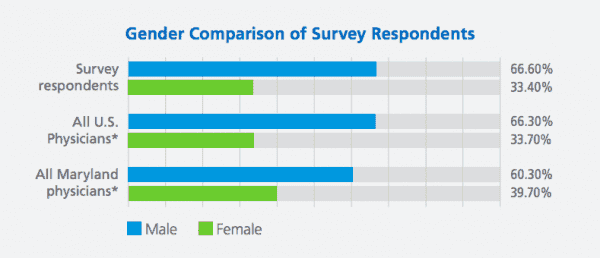
Female doctors in Maryland make 50 percent less on average than their male peers.
That was the finding of a recent survey by Merritt Hawkins, conducted on behalf of the Maryland State Medical Society.
Everybody is still making good money. But men who are primary care doctors and specialists and surgeons make $335,000 on average, while women make about $224,000.
The exact numbers vary by specialty — women in family medicine earn $164,000, versus $243,000 for men — but the trendlines hold.
It’s also true if you look at pay on an hourly basis: A woman is paid about 40 percent less by the hour than a man.
Let’s see some charts.

Pay disparities persist across most professions, of course, but there is something about the physician gap that feels particularly acute.
Theresa Rohr-Kirchgraber, past president of the American Medical Women’s Association, told me that even though 71 percent of women in medicine are the primary breadwinners for their families, that reality hasn’t translated to their salaries.
”Women are not necessarily seen as head of household, so the idea that you can pay them a little bit less is out there,” she said.
There are also simply a lot more men in medicine right now, so women are both outnumbered and paid worse. This survey covered only Maryland, but its respondents look a lot like the United States as a whole.

The demographics could be changing. As Governing magazine reported earlier this year, more women than men are entering medical school these days.
But the pay gap persists, not only in Maryland but everywhere. In 2017, across the United States, women were paid on average about $105,000 less than their male counterparts, according to a recent study covered in that Governing piece, a gap that actually grew from 2016 to 2017.
More women in medicine, meanwhile, might not be a panacea for these salary issues; Rohr-Kirchgraber told me that as more women entered the OB-GYN field over the years, pay actually fell overall, rather than women’s income rising.
The first solution is transparency, Rohr-Kirchgraber said. Female physicians need to know what their male counterparts are making if they are going to start negotiating fair salaries. She’s worried about some recent changes to federal guidelines by the Trump administration that rolled back transparency requirements for employers.
”I need to have some idea what’s going on so I know what to negotiate for,” Rohr-Kirchgraber said.
After all, when people talk about getting health care costs under control, I don’t think this is what they had in mind.
This story appears in VoxCare, a newsletter from Vox on the latest twists and turns in America’s health care debate. Sign up to get VoxCare in your inbox along with more health care stats and news.
vox-mark
VoxCare
Subscribe
By signing up, you agree to our Privacy Policy and European users agree to the data transfer policy.
For more newsletters, check out our newsletters page.
Join the conversation
Are you interested in more discussions around health care policy? Join our Facebook community for conversation and updates.
Sourse: vox.com






